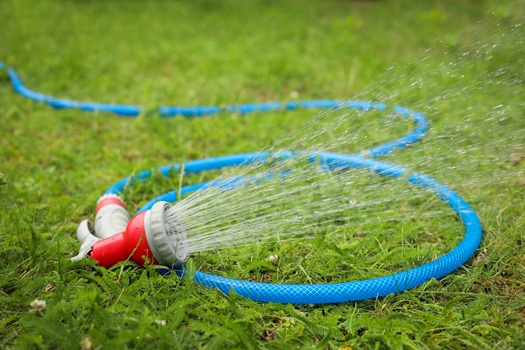
When the heat rolls in and rain becomes rare, lawn care turns from a routine task into a seasonal challenge. Keeping your grass green and healthy during a drought isn’t impossible, but it does take a different approach. Between watering restrictions, rising temperatures, and stressed-out soil, your lawn will need a little extra help to survive and bounce back when conditions improve.
While some dry patches and browning may be unavoidable, the way you manage your lawn during these dry periods can make a major difference. In fact, what you do now could determine whether your grass recovers quickly or struggles long after the drought ends.
Recognizing the First Signs of Drought Stress
Knowing when your lawn in Conway SC needs help is half the battle. Common early signs of drought stress include grass blades that stay flat after walking across them, a darker or bluish tint in the color of the grass, and a general wilted appearance. These changes suggest that the soil is drying out and the root system is beginning to struggle.
Once these symptoms appear, the clock starts ticking. Acting early—before the damage becomes severe—can help preserve the grass’s core health, even if it temporarily loses its bright green color.
Why Deep, Infrequent Watering Works Best
When water is limited, the goal should be to encourage deep root growth. That means watering less often, but more thoroughly. Applying about half an inch of water once every 2 to 4 weeks is usually enough to keep the root system hydrated. This supports the crown and allows the lawn to recover once rainfall returns.
On the other hand, light, frequent watering barely reaches the roots and can do more harm than good. It encourages shallow root systems, which dry out faster and make the lawn more vulnerable. If your local regulations allow, focus on early morning watering so moisture has time to soak in before the sun gets intense.
Lawn Care During Dormancy: What to Avoid
It’s tempting to try and force your grass to stay green, but during a drought, dormancy is actually a natural and protective state. Once your lawn has gone dormant, it’s best to leave it alone. Trying to bring it back too early—especially with heavy watering or fertilizing—can drain the plant’s internal resources. If the heat continues, the grass won’t be able to recover and could suffer permanent damage.
Dormant grass may not look great, but it’s still alive. The goal is to keep it alive long enough to bounce back when cooler, wetter weather returns. That means supporting the roots without over-stimulating the blades.
Mow Higher to Reduce Stress on Grass

lawn care services in Myrtle Beach SC
Another key part of drought season lawn care in Conway SC is adjusting how you mow. Raise your mowing height to about 2.5 to 3 inches and avoid cutting more than one-third of the blade at a time. Taller grass blades provide more shade to the soil, which helps preserve moisture and keep temperatures lower near the roots.
Mowing too short exposes the crown of the plant and dries out the soil more quickly. Plus, during dry periods, short grass doesn’t have enough surface area to photosynthesize properly, which slows down recovery and increases stress.
Skip the Nitrogen—Focus on Soil Support
Fertilizing during a drought might seem like a good idea, but it usually backfires. Nitrogen stimulates leaf growth, which demands more water at a time when the lawn is already under pressure. Instead, wait until early autumn when temperatures drop and moisture levels begin to rise.
If you’re using organic lawn care practices, there may already be enough nutrients in the soil to carry the grass through the season. Keep an eye on potassium levels though, as it can improve drought tolerance. Balanced soil nutrition helps grass withstand stress better without pushing unnecessary growth.
Keep Lawn Traffic to a Minimum
Even in the best conditions, heavy foot traffic compacts soil and stresses grass. During a drought, the damage multiplies. Avoid walking or placing heavy items on the lawn whenever possible. Compacted soil holds less air and water, which makes recovery slower and less predictable.
This is especially true in areas with clay soil, high pH levels, or past construction work. These already-compromised spots tend to be the first to show signs of stress and the last to recover once the drought ends.
How Organic Lawn Care Can Help During Dry Seasons
Organic practices offer some built-in advantages during drought conditions. If your lawn in Conway SC has been treated with compost or topdressing in previous seasons, the soil is likely more structured and rich in organic matter. This means better moisture retention and nutrient access, even when rainfall is scarce.
In fact, lawns with healthy organic soils often stay greener for longer and recover more quickly after periods of stress. While they’re not immune to drought, they have a stronger foundation to survive it.
Conway Lawn Care Service offers professional lawn care services that are tailored to your region’s weather conditions and seasonal challenges. With expert guidance, natural soil treatments, and water-conscious strategies, they help your lawn stay healthy no matter how dry it gets. Whether you need drought-season support or long-term maintenance, their team is ready to help.
Call Conway Lawn Care Service now to schedule your lawn care consultation and give your grass the best chance to thrive—even through the toughest weather.
Like our Facebook page for more information.
Conway Lawn Care Service
Conway, SC 29526
843-602-9872
http://conwaylawncareservices.com
Areas Served: Carolina Forest, Myrtle Beach, North Myrtle Beach, Conway, Surfside Beach, Forestbrook
No comments:
Post a Comment